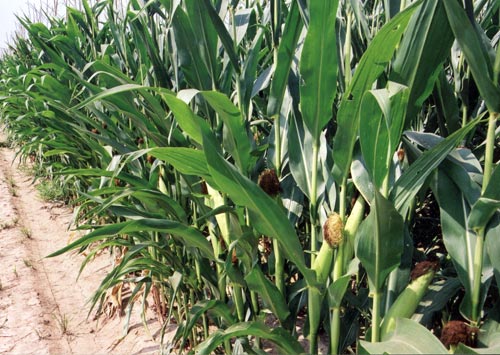June 13, 2011

While corn prices have been robust this year, nitrogen prices have kept pace, prompting producers to do all they can to be more efficient in their fertilization strategies.
Side-dressing, adjustment of nitrogen levels according to a site’s yield potential, and soil water availability for nitrogen up-take all are considerations when deciding how to get the most bang from your buck when fertilizing corn.
And while two years of research isn’t enough to make a definitive judgment on the best strategy, it does provide a hint as to what might influence corn response to nitrogen applications.
Auburn University researchers and Extension specialists recently released the results of a two-year study on nitrogen application on corn at two locations in Alabama.
In 2009 and this past year, the study was carried out at the Tennessee Valley Research and Extension Center in Belle Mina in north Alabama and at the E.V. Smith Research Center in Shorter, located in the central part of the state.
The main goal of each study was to evaluate the impact of nitrogen fertilizer rates and timing on grain yield of two corn hybrids under irrigated conditions.
The experiment consisted of 16 different treatments where the nitrogen was applied in three different ways: 1) all nitrogen applied at pre‐plant; 2) half of the total nitrogen was applied pre‐plant and the other half in a side‐dress application at the V6 growth stage; and 3) one-third of the total nitrogen was applied pre‐plant and the remainder in a side‐dress application at the V6 growth stage.
The corn hybrids planted were Pioneer 31P42 and DeKalb 67‐87.
Experimental plots were four rows wide by 30 feet long. Treatments were replicated four times in a randomized complete block design. Yield data was recorded after harvesting the middle two rows of each plot.
Because there were no yield differences between hybrids in respect to the nitrogen treatments, average yield data for both hybrids were presented in the study.
Yield and the amount of rainfall during critical crop growth periods — tasseling and grain filling — differed between years. Overall, yield was higher in 2009 than in 2010. In 2009, corn responses to high nitrogen rates resulted in higher yield than in 2010.
When yield data was averaged over total nitrogen applied independent of the split, there were no yield increases above 150 pounds per acre at the central Alabama location.
For both years, the yield reached a plateau at relatively high levels of nitrogen. In some cases, yield decreased as rate increased.
A different situation was observed at the north Alabama location in 2009 and 2010 with yield increasing as nitrogen rate increased.
Resulted in higher yields
Across locations and years, the split application of nitrogen resulted in higher yield than total nitrogen applied at planting. In most cases, a trend for higher yield was observed when 70 percent of the total nitrogen was applied at V6 rather than a side‐dress application of 50 percent of the total nitrogen.
Therefore, the split application of 30 percent of total nitrogen applied pre‐plant and the other 70 percent applied at the V6 growth stage resulted in higher yields, especially when high nitrogen rates were applied.
In contrast, for low nitrogen application rates, such as 50 pounds per acre, the best strategy was to side‐dress most of it. When the 30/70 split application was compared with total nitrogen applied at planting, a higher response to the split application was observed at most locations.
Assisting in the research were Brenda V. Ortiz, assistant professor and Extension specialist, Charles Burmester, Extension agronomist, and Kip Balkcom, research agronomist, USDA‐ARS.
In the sandy Coastal Plain soils of Georgia, nitrogen is very mobile, and if excessive rainfall occurs or excessive amounts of water are applied through the irrigation system, leaching losses of nitrogen can be quite drastic during the growing season, according to University of Georgia Extension soil scientist Glen Harris.
To increase the efficiency of nitrogen recovery during the season, split applications of nitrogen are recommended.
Harris recommends that growers apply 25 to 30 percent of the projected nitrogen needs before or at planting. The remaining nitrogen can be applied side-dress and/or injected through the center-pivot systems.
If all the nitrogen is applied with ground equipment, apply 50 to 75 pounds per acre at or before planting under irrigated conditions and 20 to 50 pounds per acre in dryland environments and the rest when the corn is 12 to 16 inches tall.
If nitrogen is to be injected through the irrigation system, Georgia recommendations call for applying 40 to 60 pounds at or before planting and begin ground or injected applications of 30 to 60 pounds of nitrogen per acre when the corn is 8 to 12 inches tall.
Continue on a bi-weekly basis until the total required nitrogen is applied. Three to five applications of nitrogen will be needed during the growing season.
Applications of nitrogen after pollination are not recommended unless a severe nitrogen deficiency is detected.
About the Author(s)
You May Also Like




